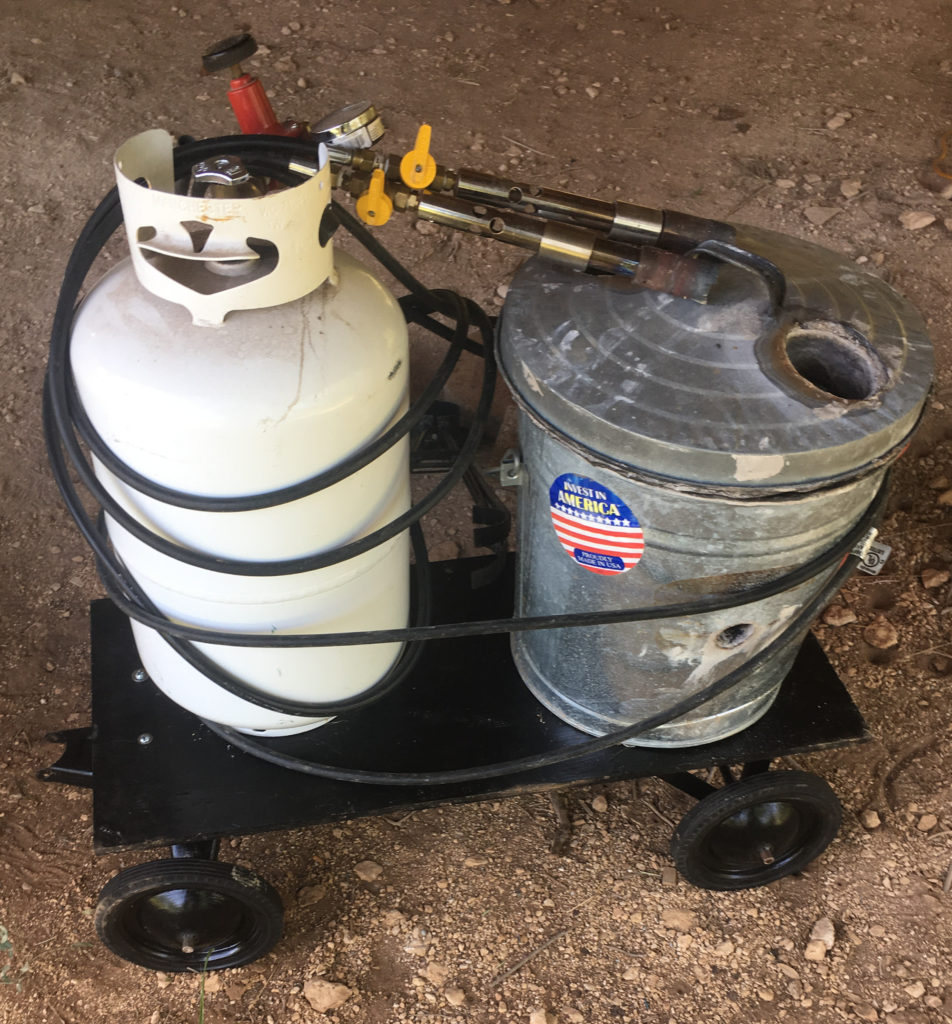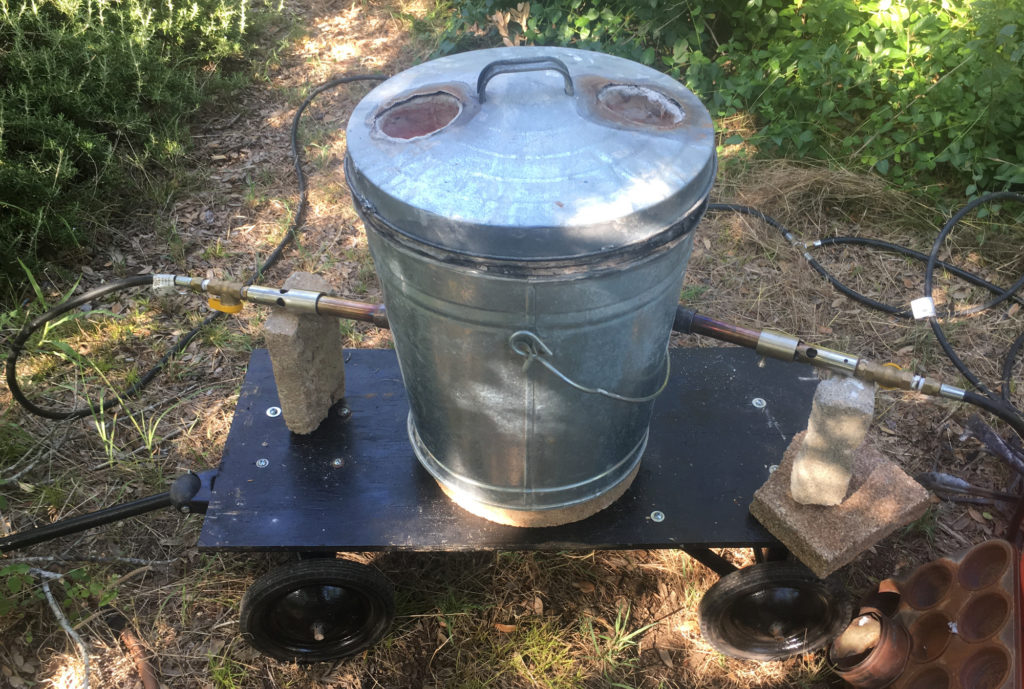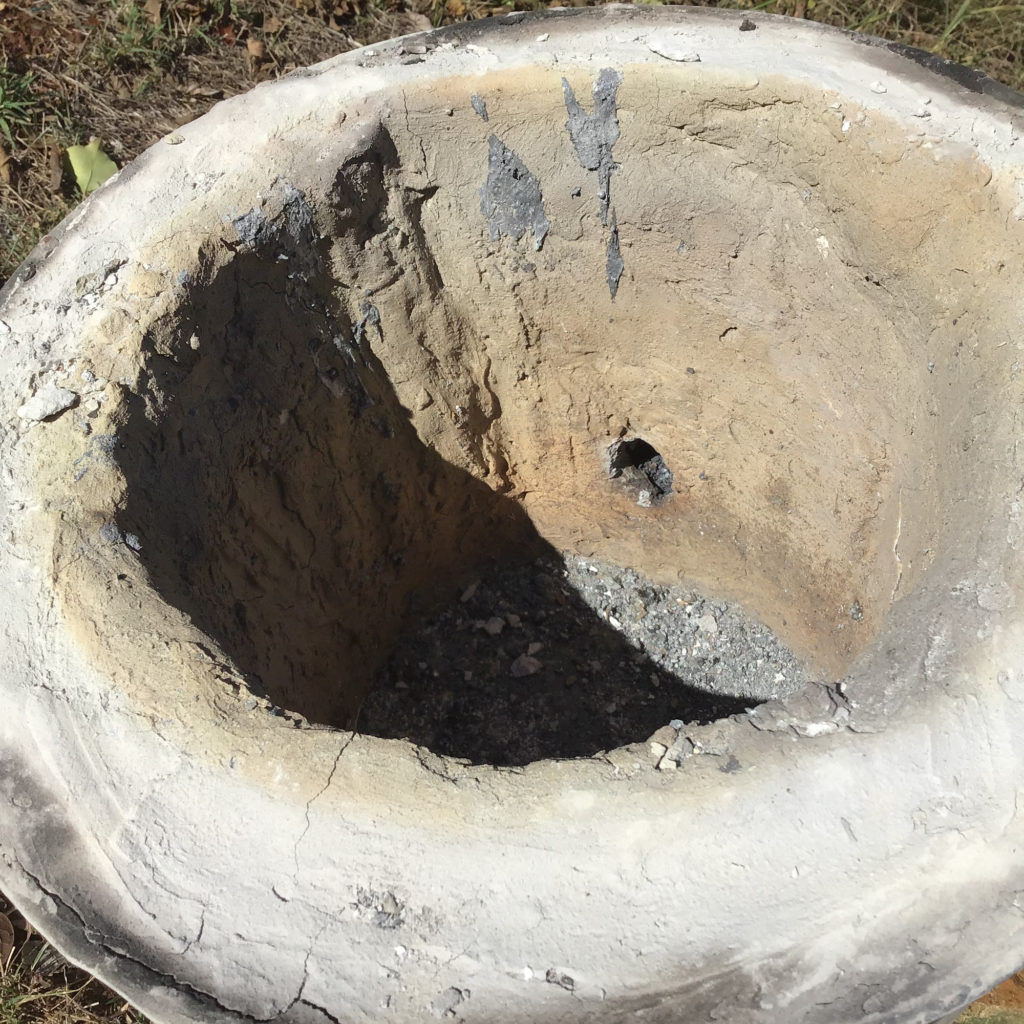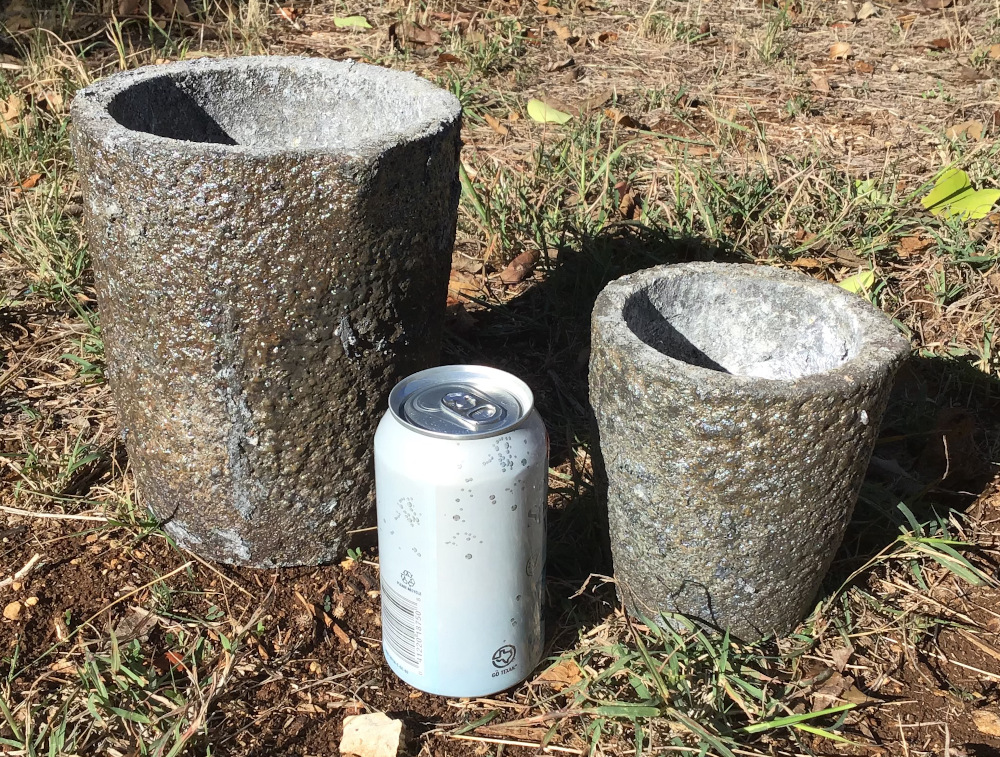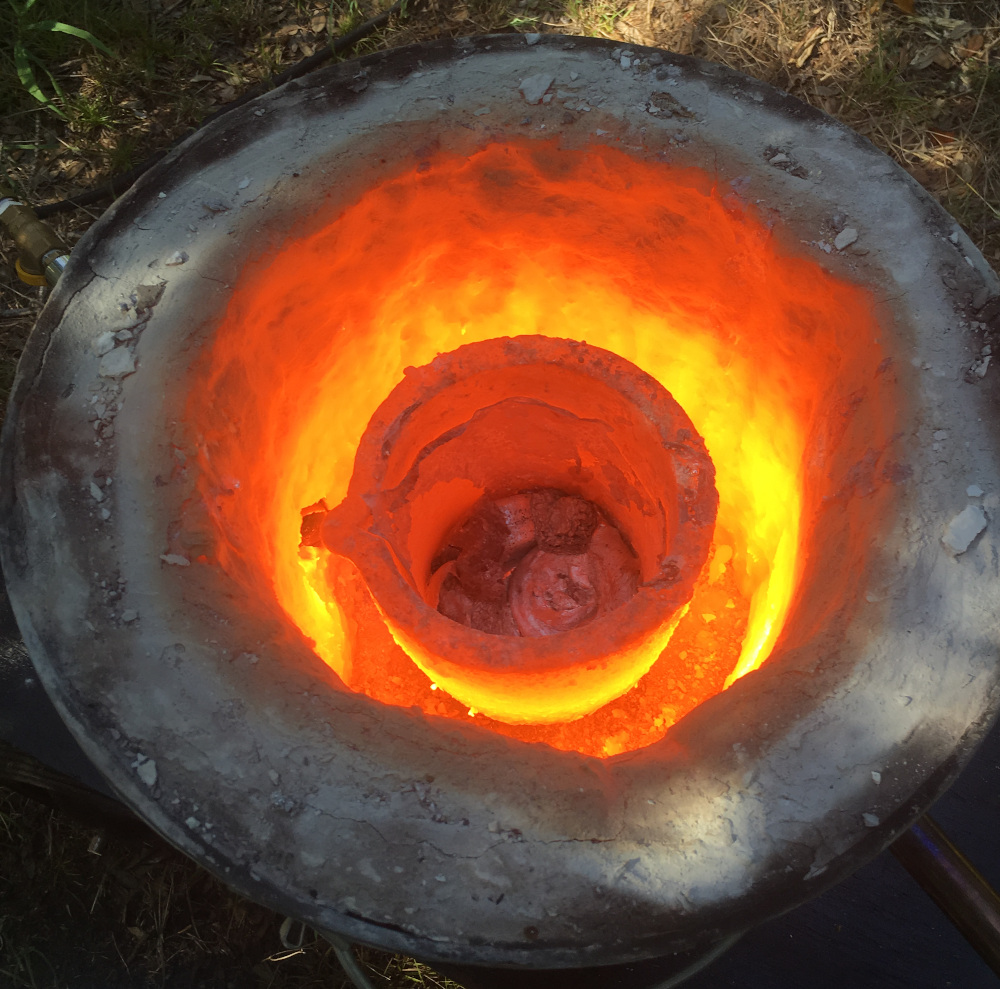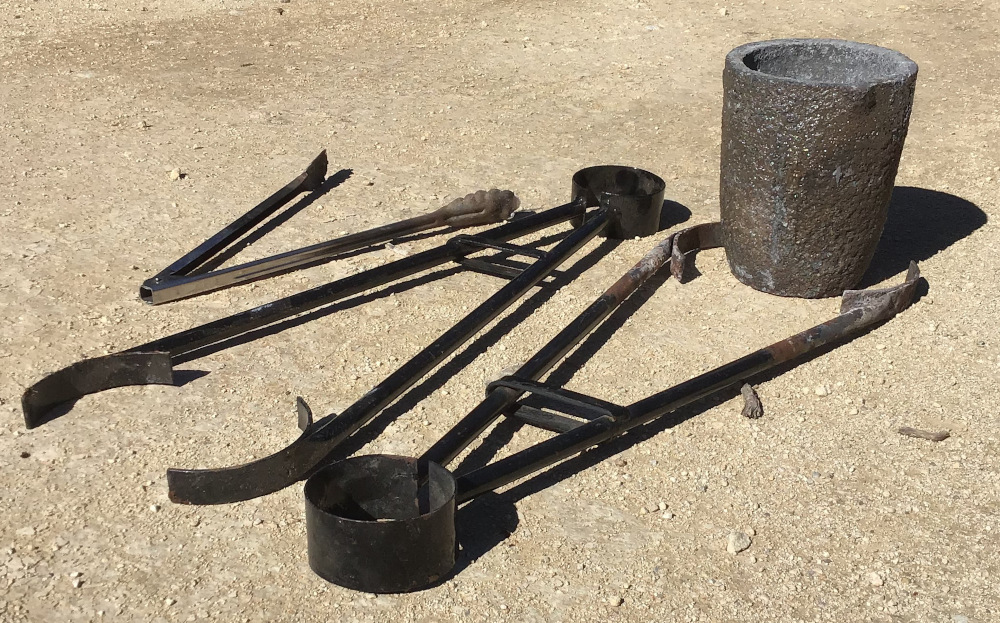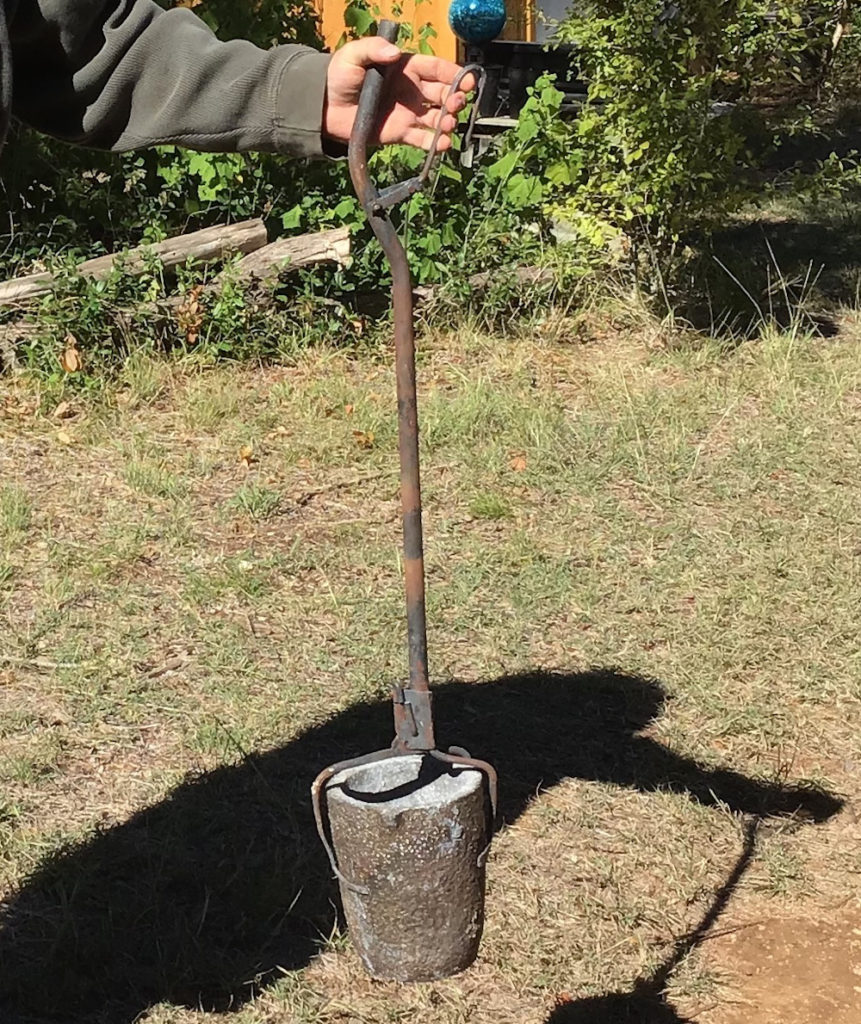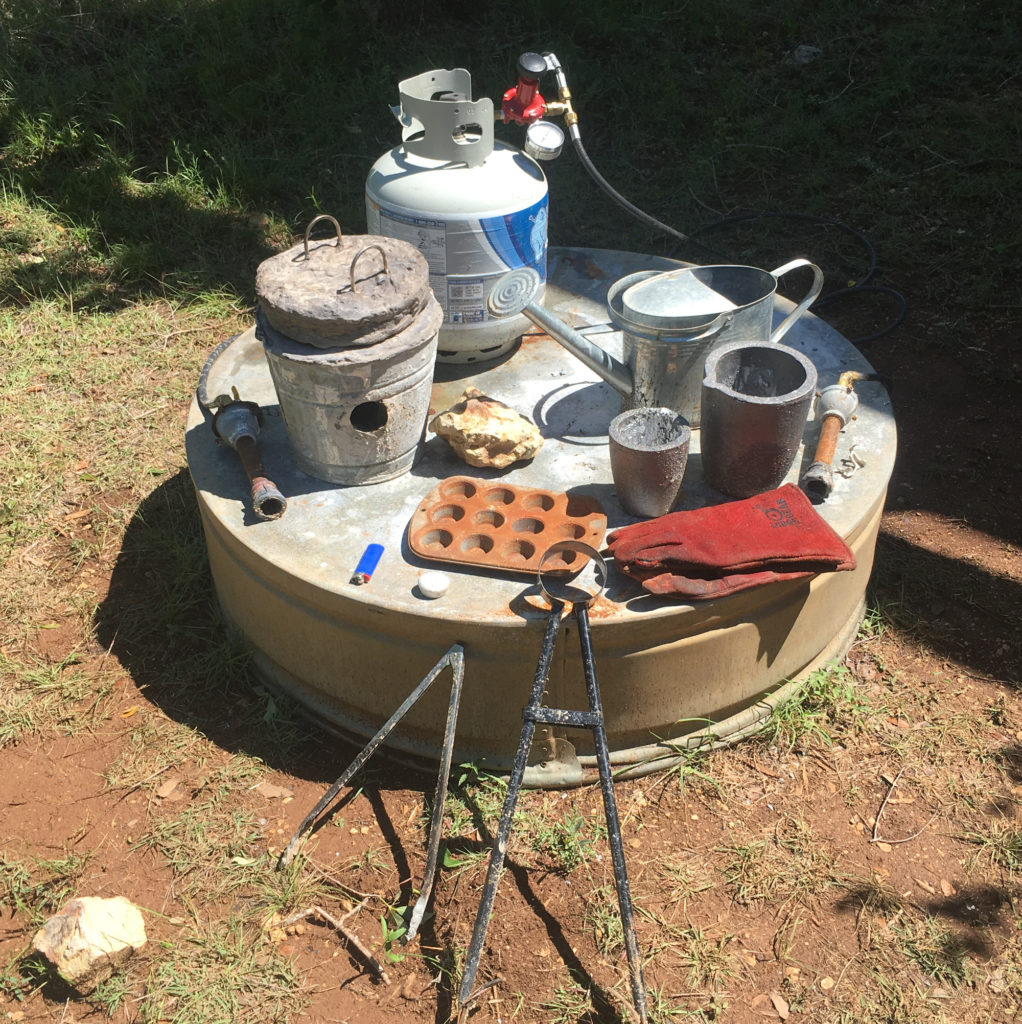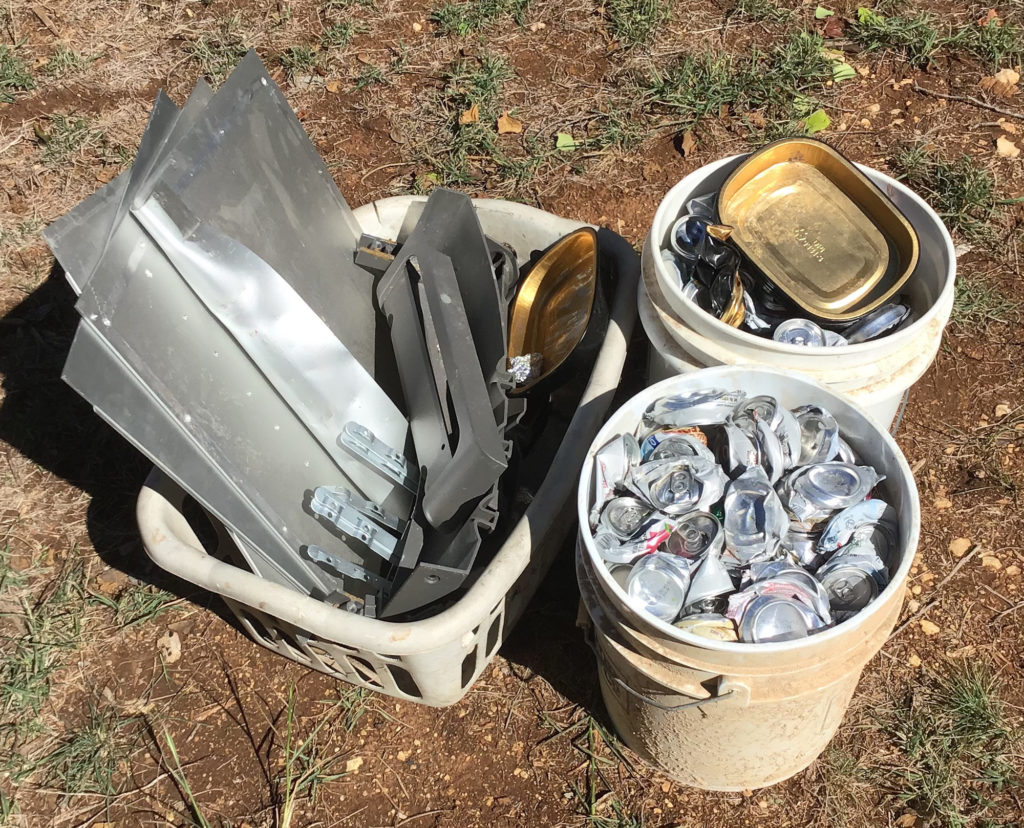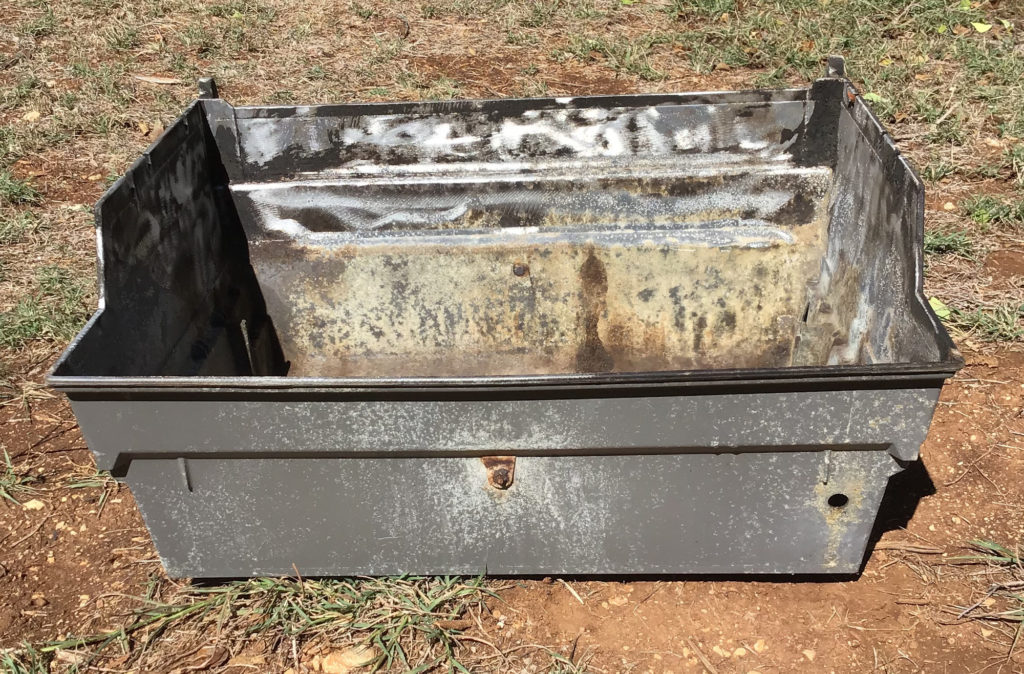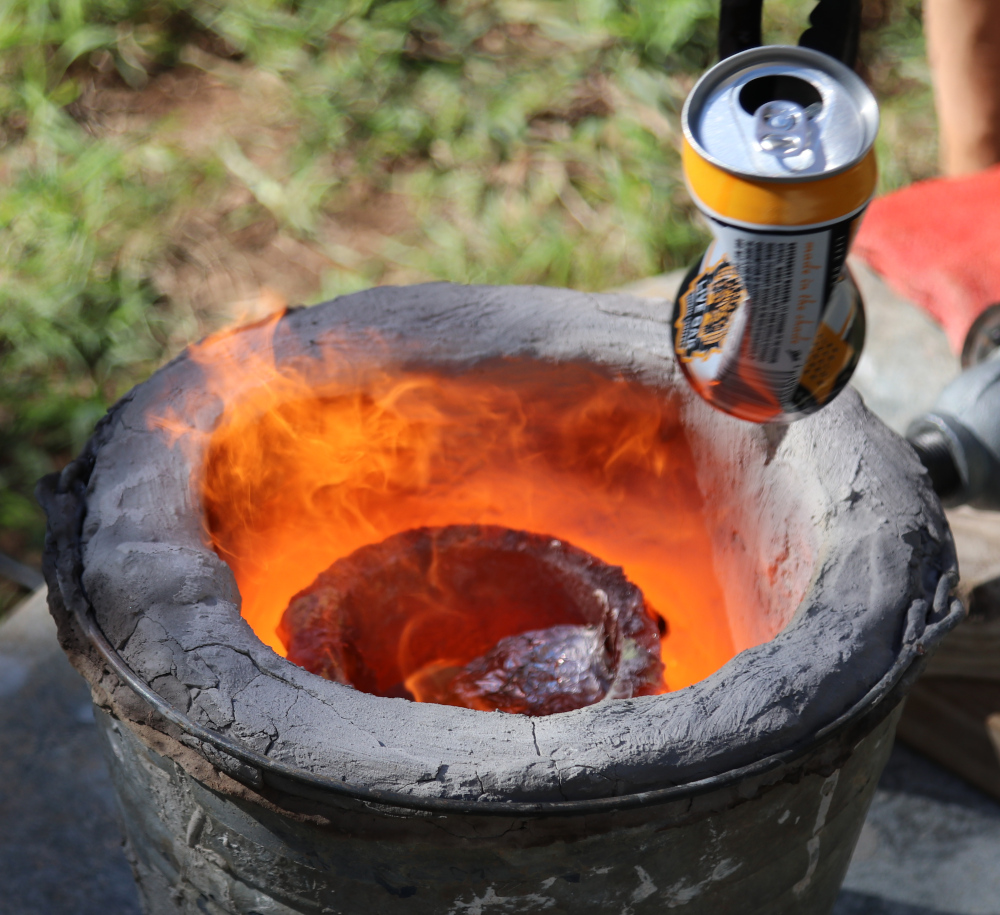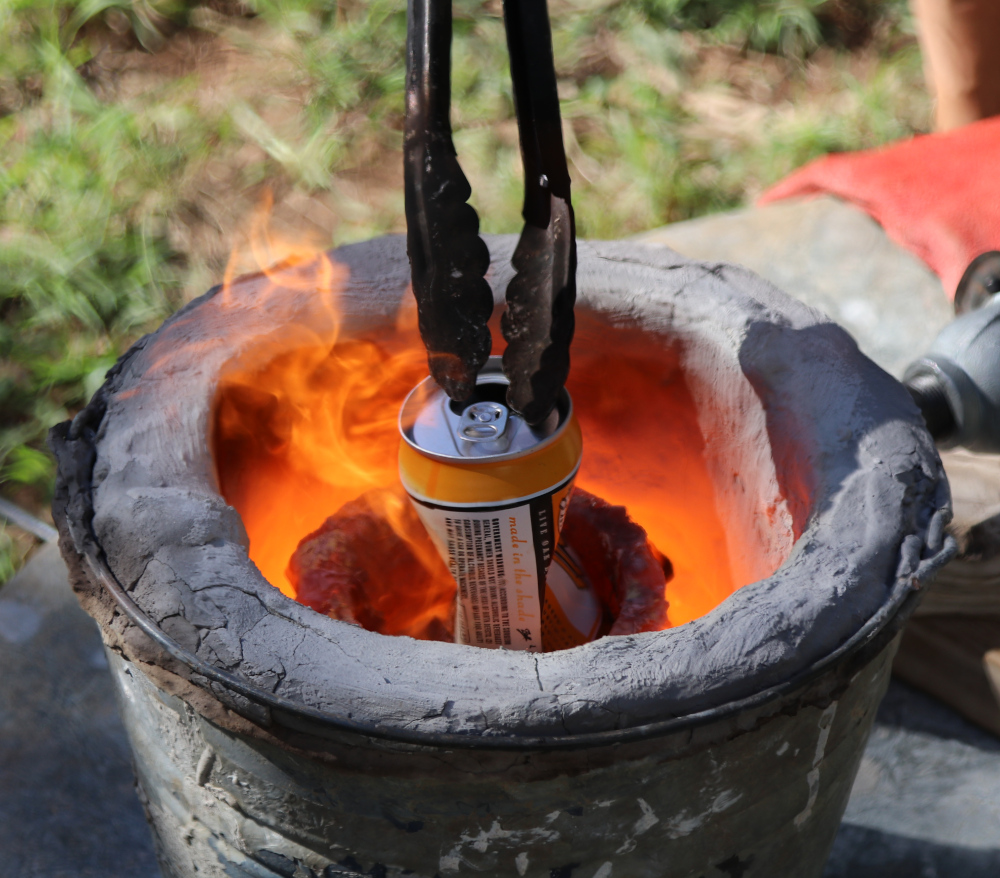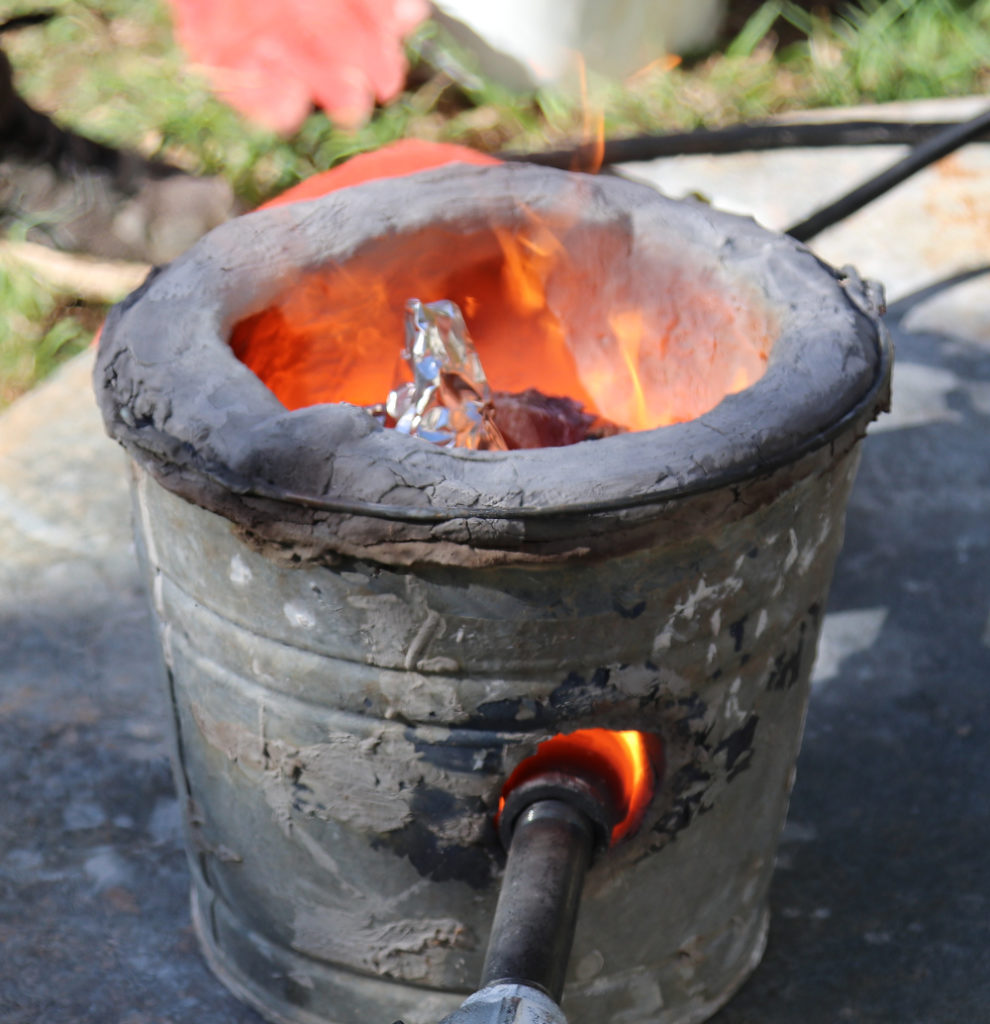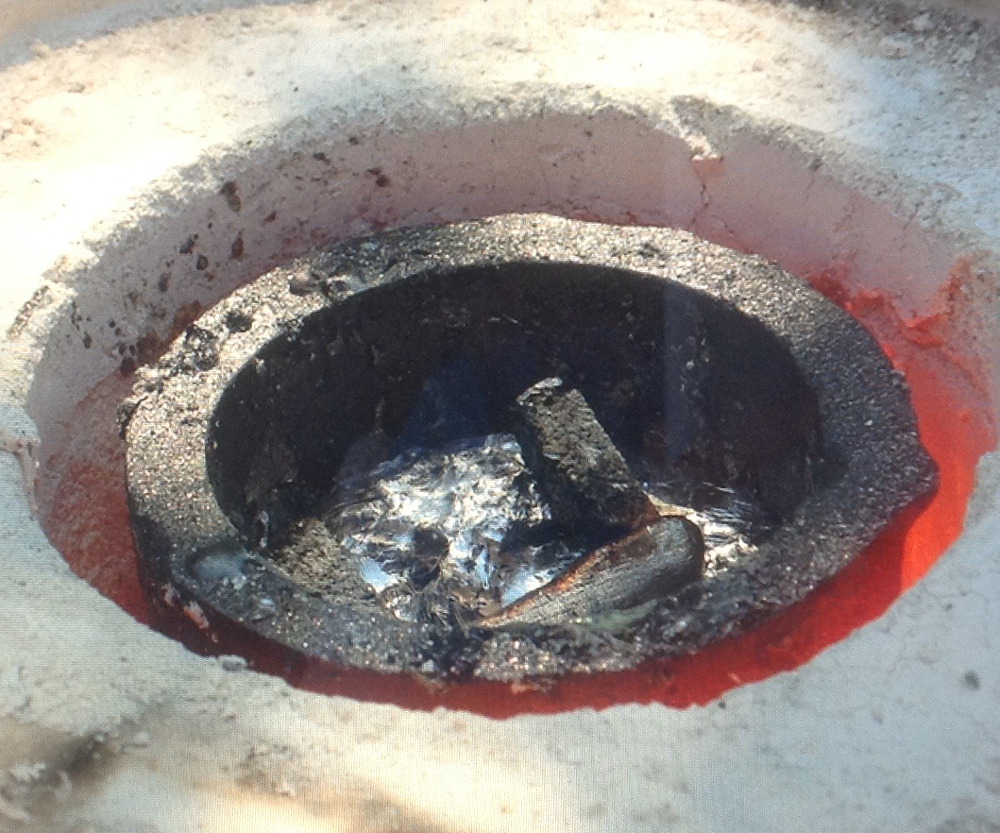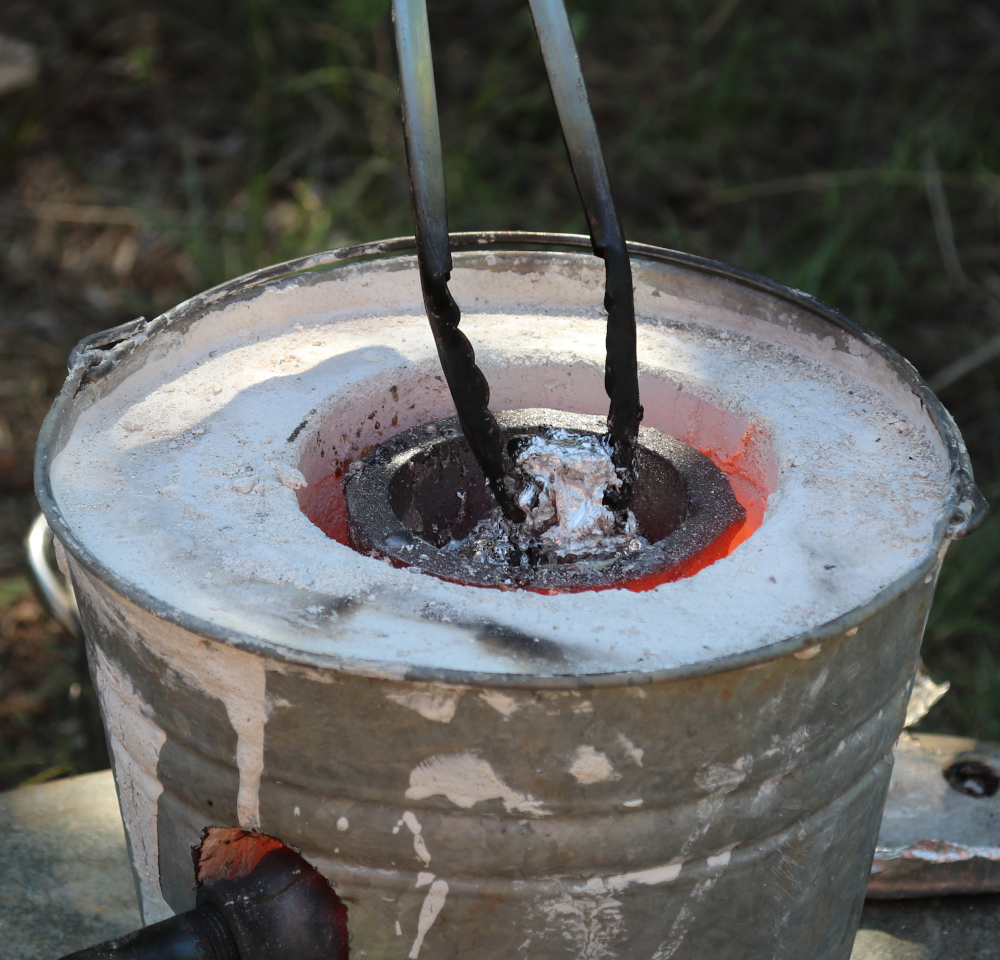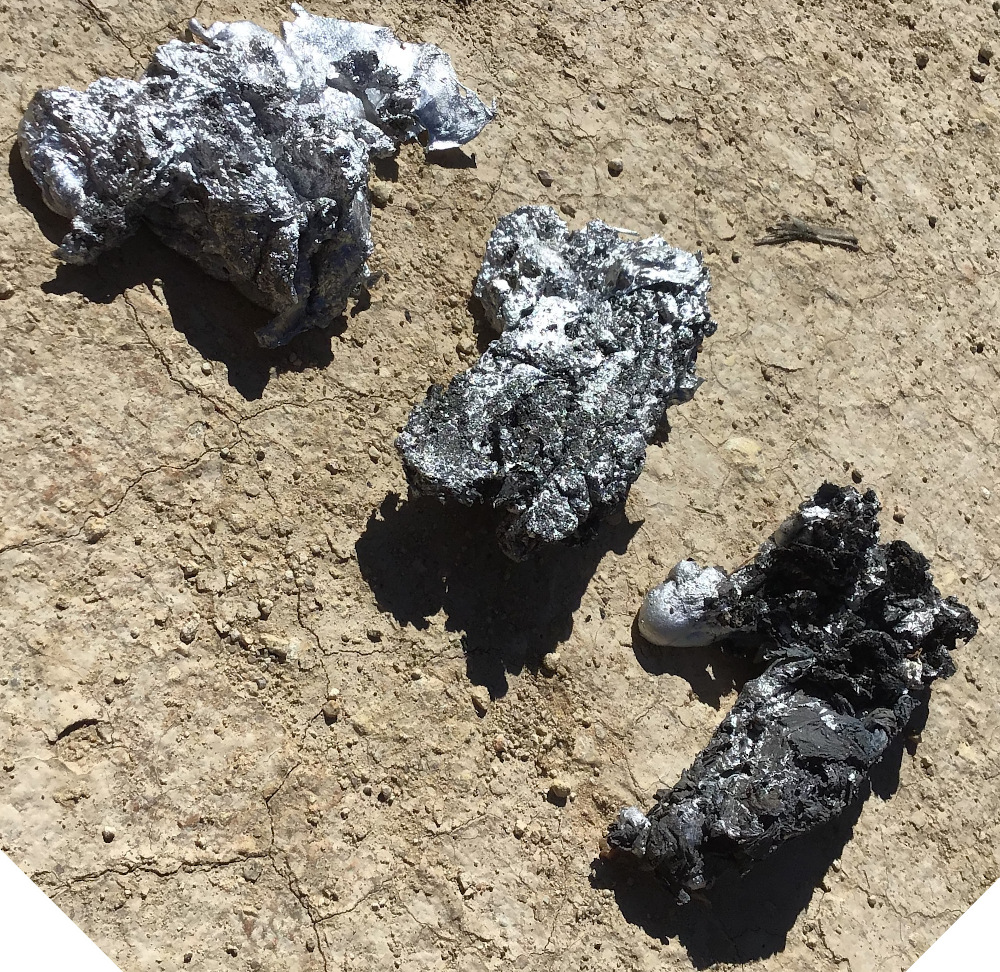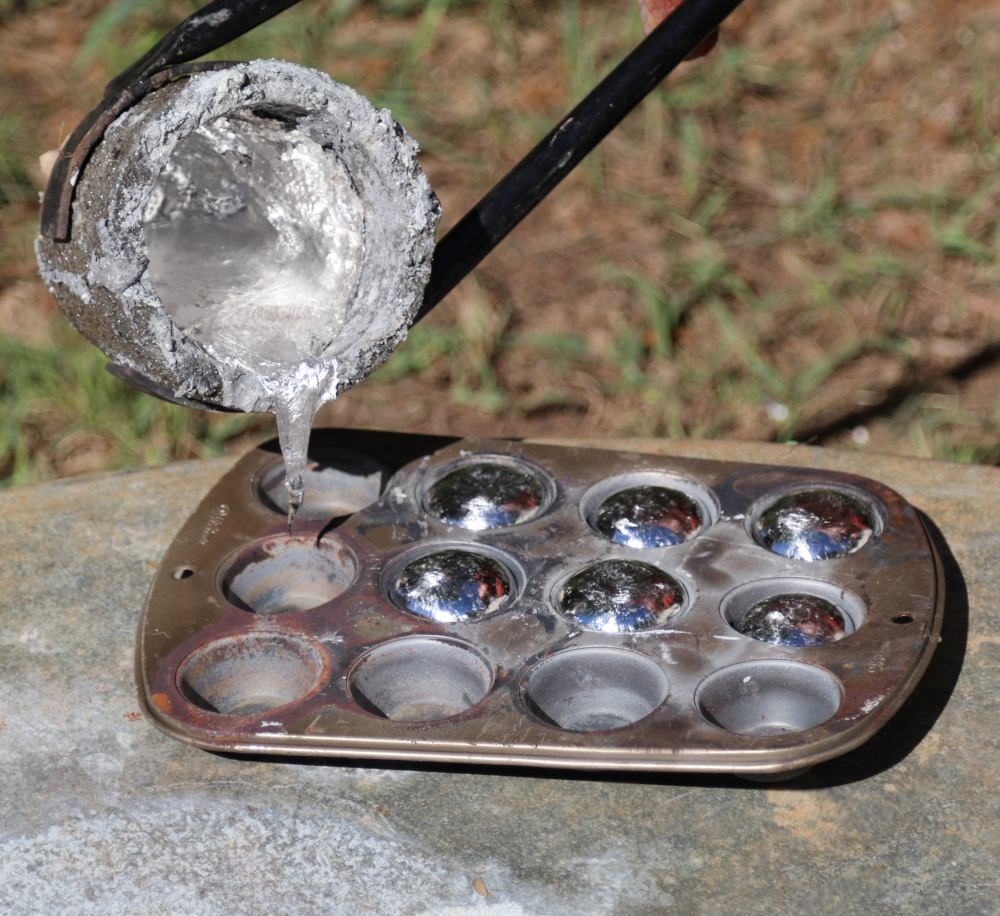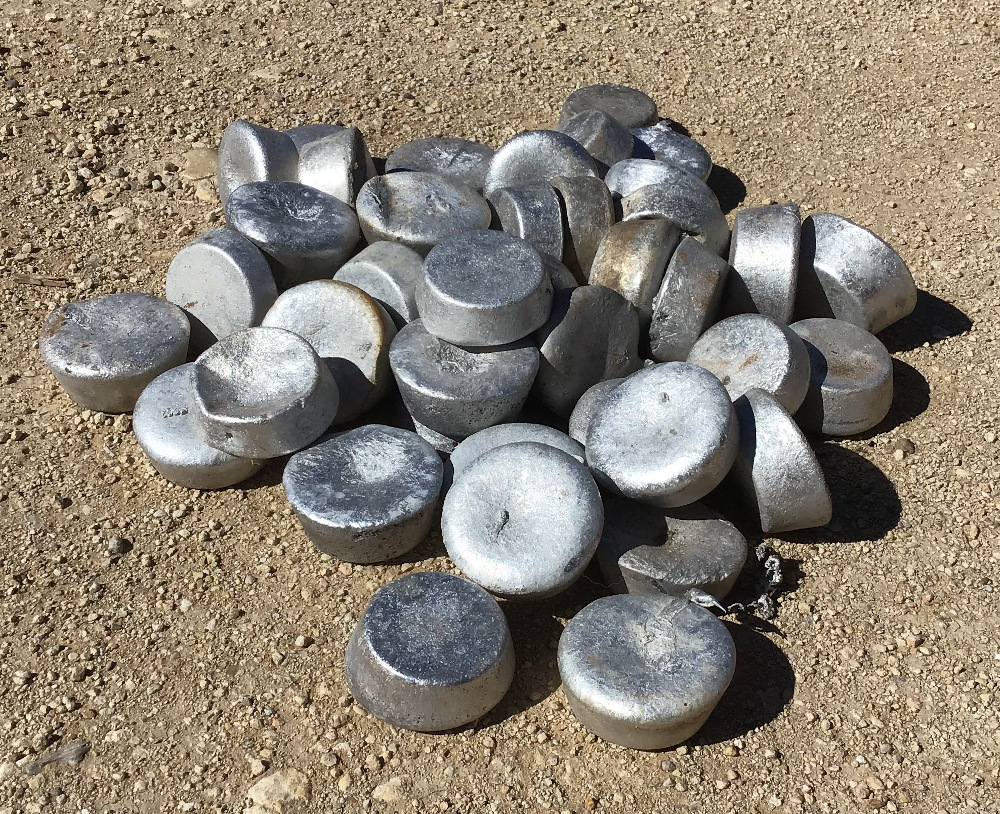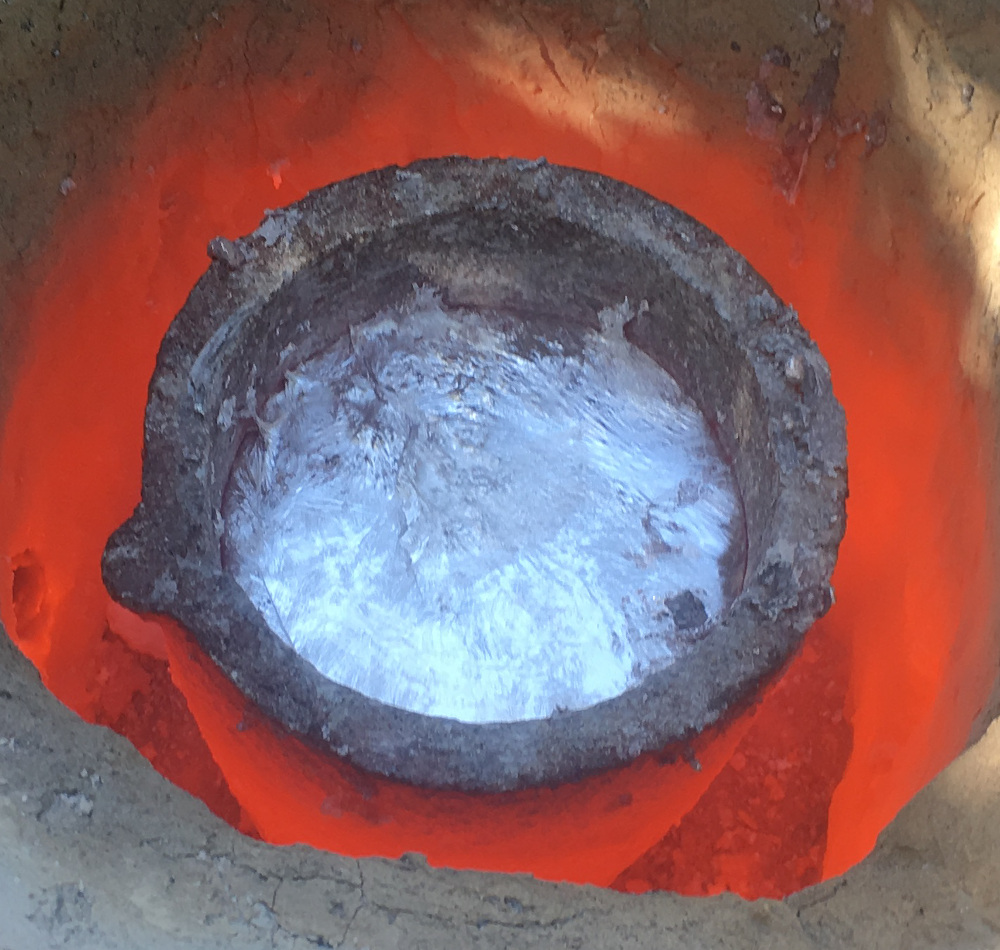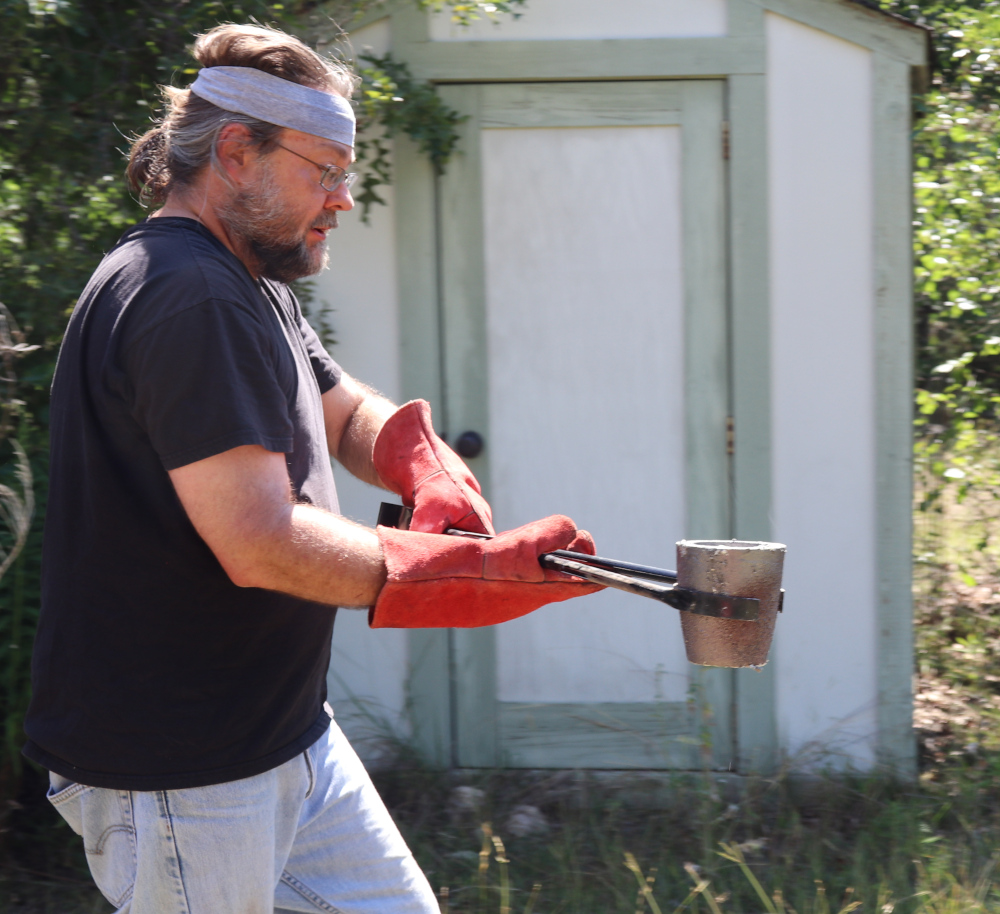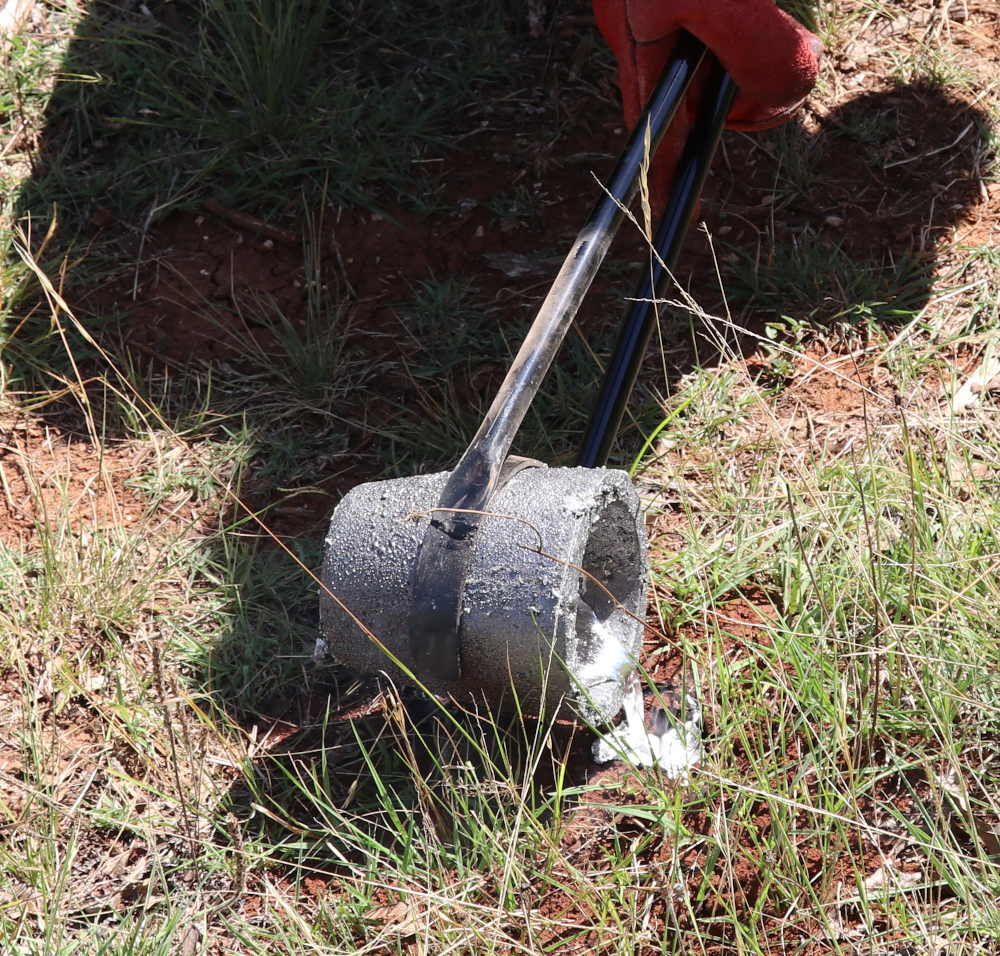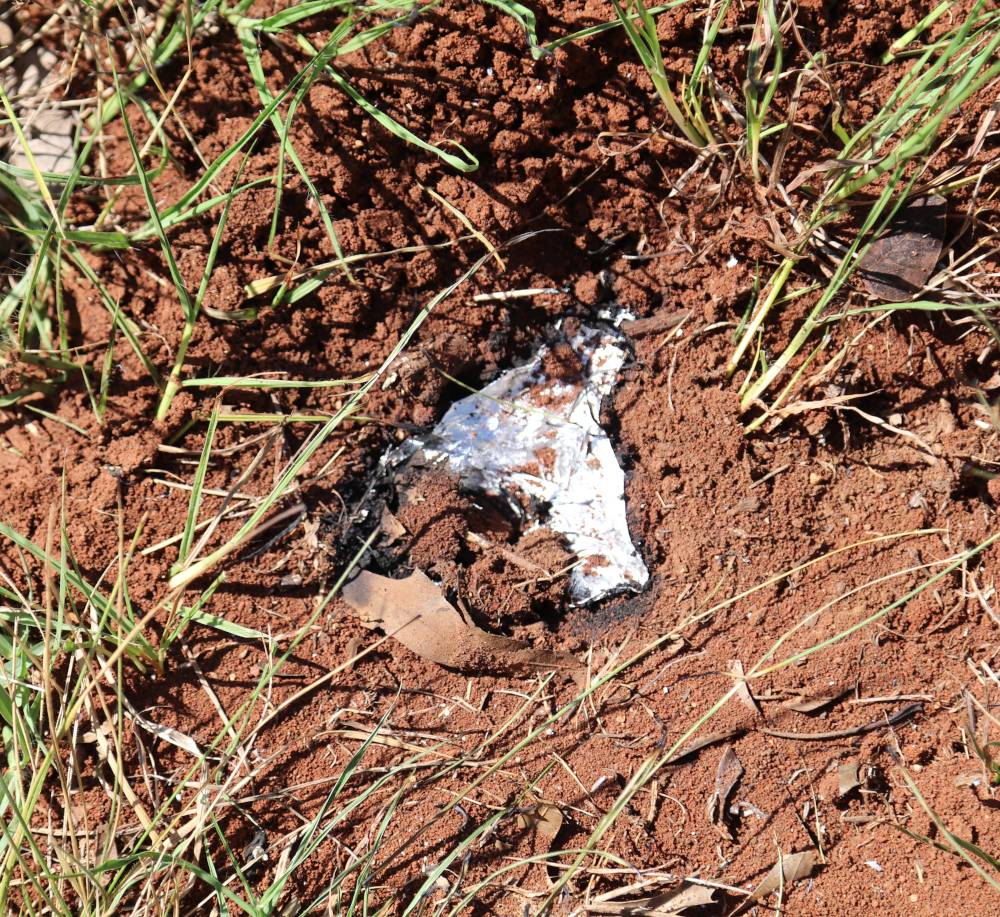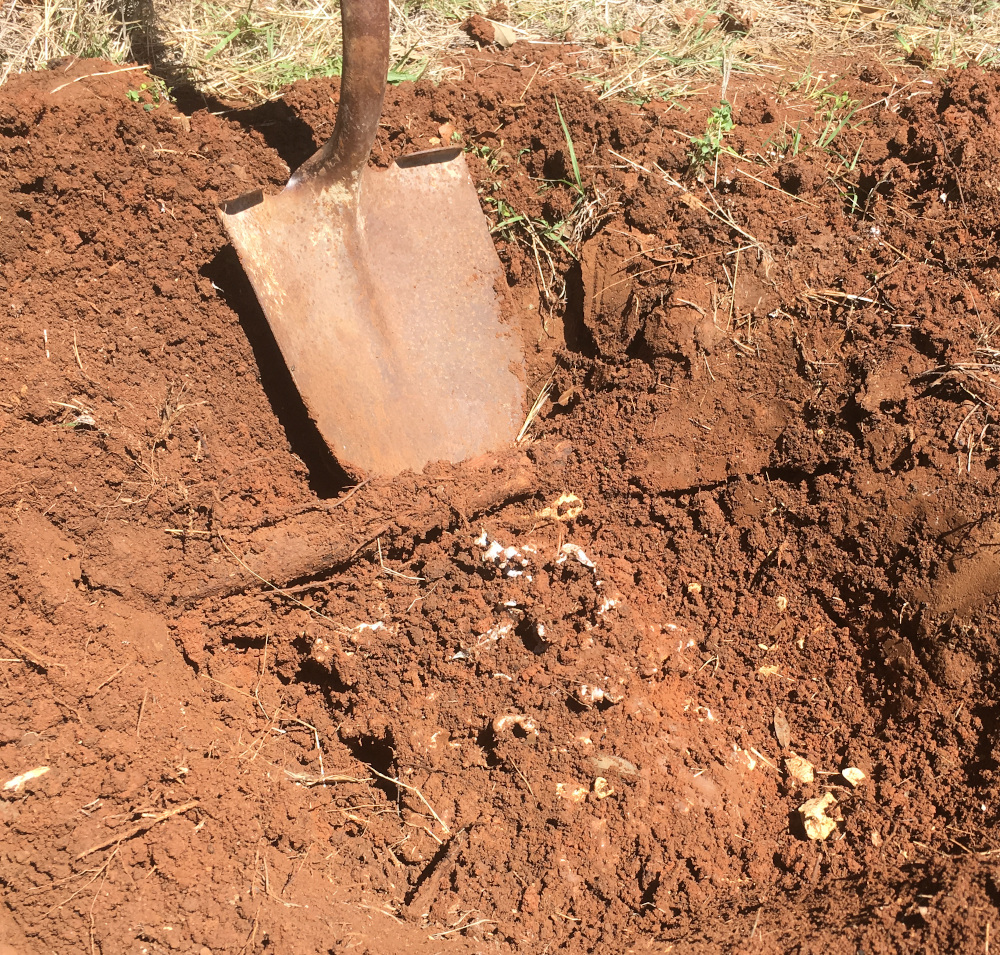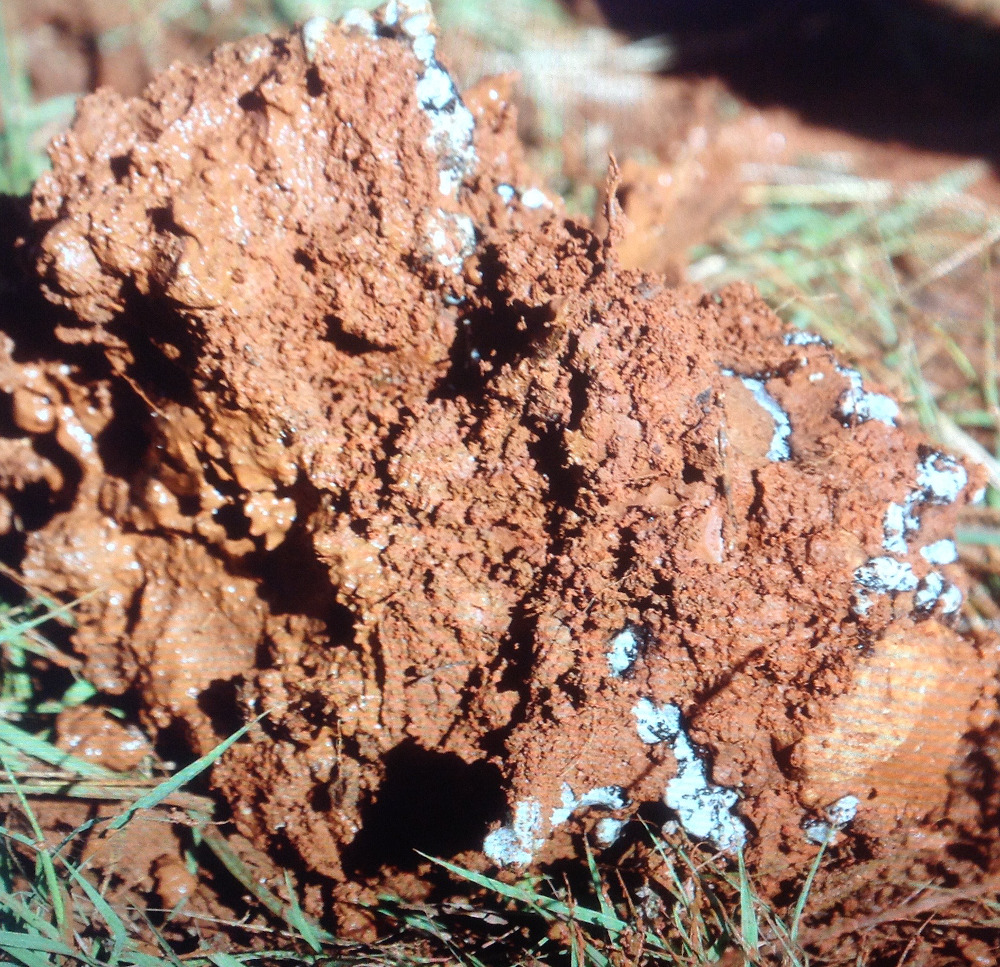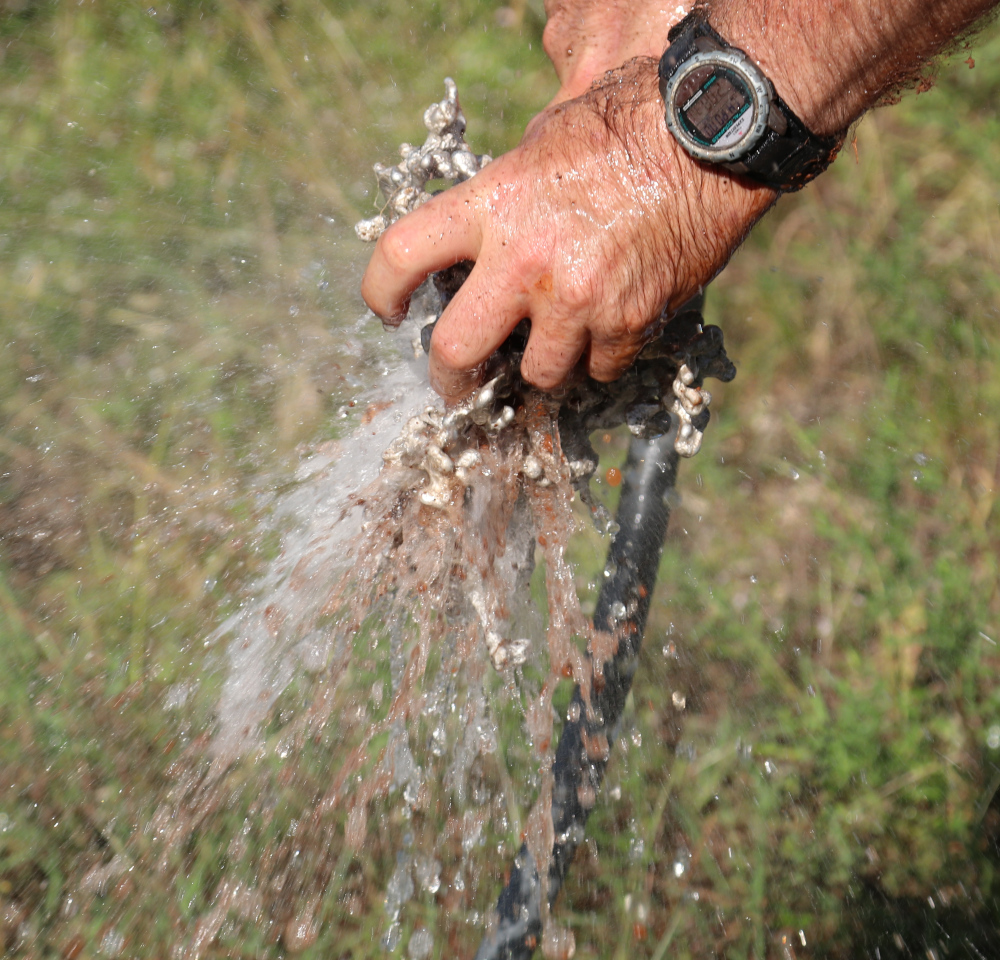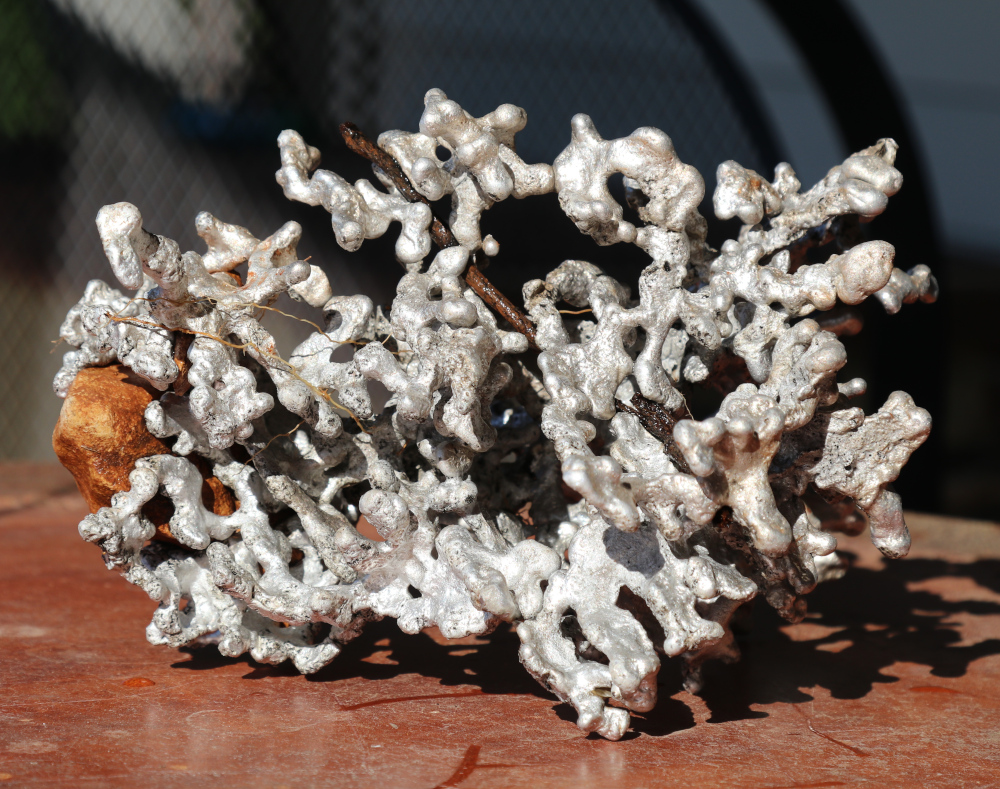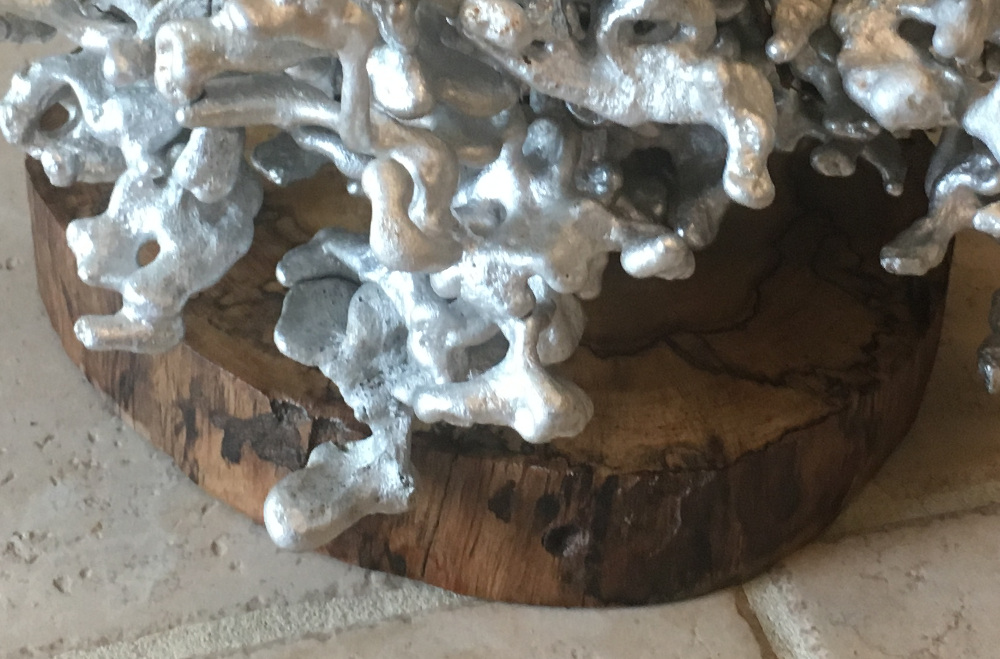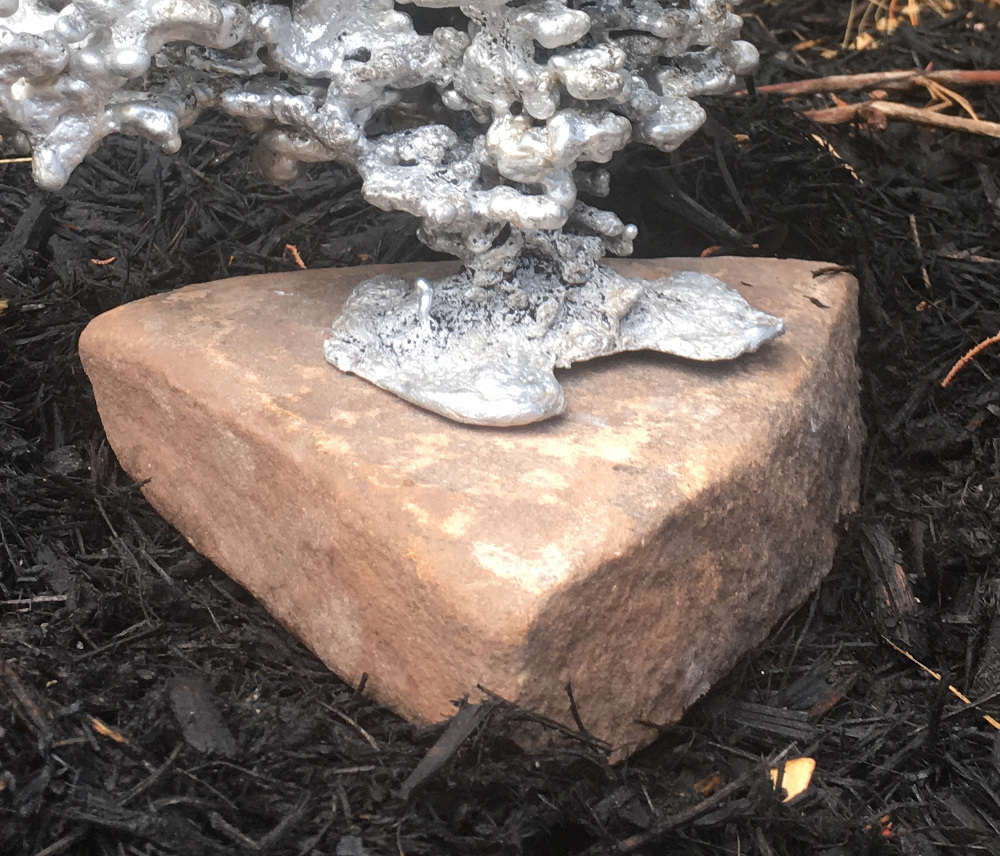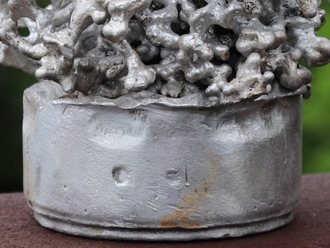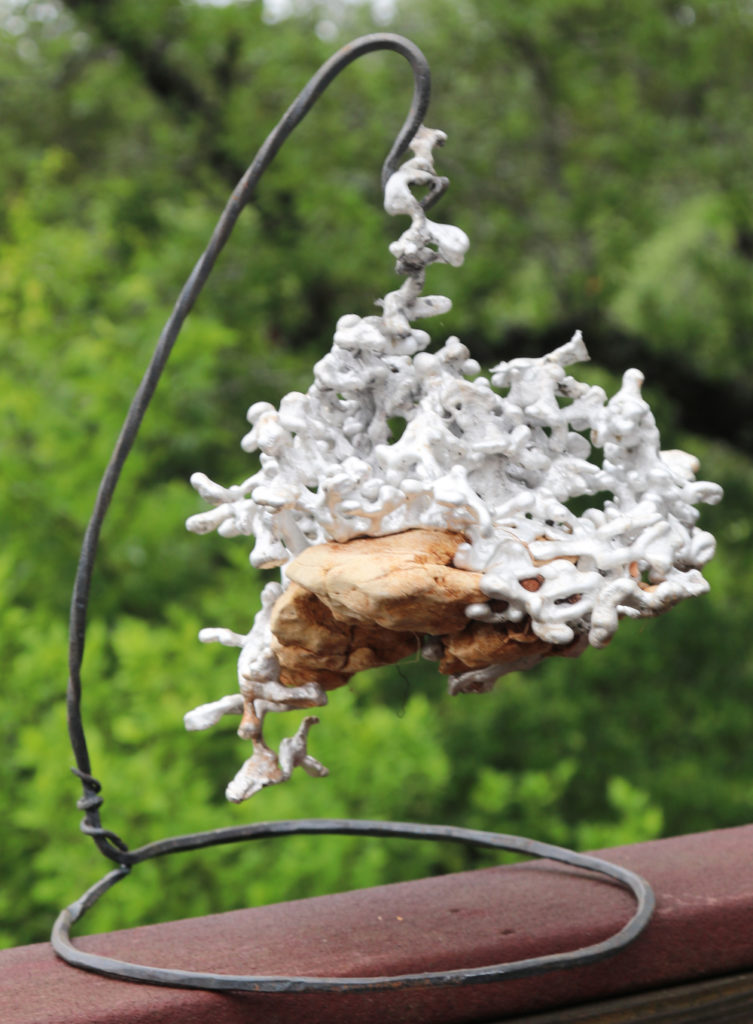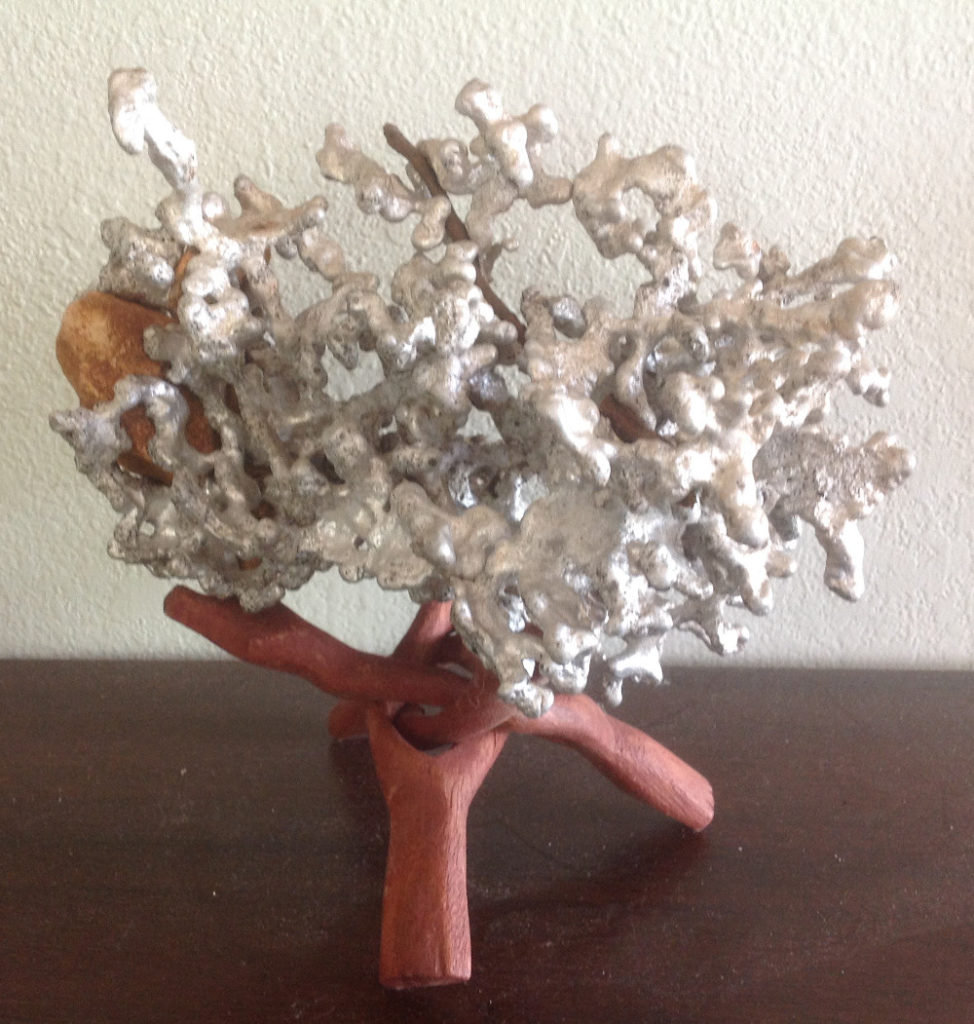There are several steps in the process of creating the sculpture. Metal must be smelted, liquified and poured into the mound. The resulting cast is excavated, cleaned and prepared for display.
Equipment
Metal casting requires several special tools: a kiln, crucible, and tongs.
The kiln is an insulated container used to heat the metal to its melting point. These are available commercially, or you may build your own. Here holes for the burners and vents were cut in a short metal garbage can, which was insulated with ceramic fiber and high-temperature cement. This kiln is small enough to fit on a wagon and move around the property to do casts on location.
A crucible is used to melt the metal. These are made of graphite and come in a variety of sizes. Pictured are a 7 cup (56 oz) and 2 cup (16 oz) crucible, with soda can for scale. Crucibles are never filled all the way to the top, so the actual amount of metal is lower. Industrial crucibles may hold several tons of metal.
Tongs are used to lift the red hot crucible out of the kiln and carry it to the ant hill. The tongs must be sized to fit the crucible to provide a good grip – you do not want to drop one of these. Larger crucibles such as the 7 cup are heavy when filled, requiring custom tongs that allow it to be lifted out of the kiln and carried to the pour location.
Many incidental items are also needed – safety equipment, molds for ingots, water for cooling, shovels, and so forth. The image below is from the very start of my casting efforts. Note the bucket based kiln and the home-made burners.
Smelting
Aluminum mostly reclaimed from scrap – everything from cans to computer cases to old BBQ grills. These sources of aluminum will also have undesirable materials mixed in with them. For example, food containers such as soda cans are lined with plastic and will have sugars or other food on them. Smelting is the process of removing impurities from your metal.
Cans are crushed, while larger pieces are cut up into chunks which will fit into the crucible. The scrap is then fed into the crucible one piece at a time.
Impurities, known as dross, either burn off or float to the surface of the metal. The dross is then removed with tongs, leaving the purified aluminum alloy behind. The dross still contains a lot of usable metal, and may be re-processed to recover as much as possible. The image below right shows three generations of dross, the last piece has very little metal left in it.
Purifying the metal by hand this way can take hours, especially with cans. Fortunately it is possible to ‘save your work’ by making ingots for later use. A muffin pan is used to mold conveniently sized ingots of around 7 ounces. When preparing to cast, the purified ingots are added to the crucible. They melt with practically no dross, and are ready to pour.
Casting
People have been casting metal for thousands of years, and it is a very straightforward process. Metal is poured into a mold, allowed to cool, and then the mold is removed. The result is a cast metal object in the shape of the mold – in this case a fire ant nest. The metal flows through the nest until it cools enough to solidify. The nest then backfills until the metal reaches the surface, forming a “base” that is actually on the surface, above the nest tunnels.
Excavation
A few hours after pouring, the cast has cooled enough that excavation can start. This may involve cutting through roots which pass through the nest. As more of the cast is exposed, a hose is used to wash away soil and make it easier to free the cast. The cast and surrounding dirt are now ready for cleaning.
The dense Hill Country dirt and clay encasing the cast is loosened in a water bath, alternating with blasts from a hose. Eventually the casting is exposed, along with any rocks or roots trapped within it. Additional scrubbing with a wire brush removes any surface dirt.
Display
The last step is to find a display that works well with the piece. Wood, rock, cast aluminum, and hand-forged iron stands are examples. The cast itself is at home indoors or out, as aluminum won’t rust or tarnish. However the untreated roots will eventually decompose if kept moist. A coat of lacquer or acrylic resin will preserve the wood if the sculpture will be outdoors.
Of course, you are free to select your own base.

